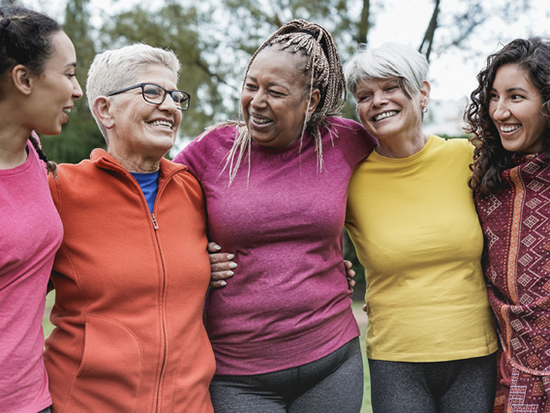Media contact: Anna Jones
 One UAB expert says the roles of screenings, warning signs and a healthy lifestyle are all keys to cancer prevention.When it comes to breast cancer prevention, there are things that women of all ages can educate themselves on and incorporate into their daily lives to help them live the healthiest lives possible.
One UAB expert says the roles of screenings, warning signs and a healthy lifestyle are all keys to cancer prevention.When it comes to breast cancer prevention, there are things that women of all ages can educate themselves on and incorporate into their daily lives to help them live the healthiest lives possible.
Katia Khoury, M.D., of the University of Alabama at Birmingham’s O’Neal Comprehensive Cancer Center, says the roles of screenings, warning signs and a healthy lifestyle are all keys to cancer prevention.
The role of screenings
It is essential to stay up to date with screening mammograms because they can help detect cancer at earlier stages, even before a woman can see or even feel something.
“We know that treatment has a much higher chance of cure, the earlier the stage of breast cancer,” Khoury said.
For women of all ages, completing regular self-exams is important because it allows one to learn their breasts and anatomy. It is also important to stay up to date with annual visits with gynecologists as they will conduct physical breast exams.
Breast pain around a patient’s monthly cycle is expected; but if the pain persists, Khoury recommends seeing a medical provider.
“Breasts can be engorged and enlarged during a monthly cycle, which may make a self-exam challenging during that time,” said Khoury, who is an assistant professor of medicine in the UAB Division of Hematology and Oncology.
It is important to be aware of family history and discuss high-risk screening and genetic testing with a provider if indicated.
Warning signs
When completing a self-exam, Khoury says, things to take note of are:
- Any changes in the breasts, including lumps or bumps
- Skin changes, including reddening of the skin
- Dimpling of the skin
- Indentations
- Nipple discharge, retraction or inversion
- Bumps under the armpit
- Skin thickening, darkening or discoloration
If any of these changes occur, she recommends scheduling an appointment with a gynecologist or primary care provider for an exam.
Learn how to complete a proper breast exam, here.
Lifestyle
When it comes to prevention, Khoury says, there are things women of all ages can incorporate into their everyday routines.
“We know that obesity is an associated risk of breast cancer, so maintaining a healthy weight is important,” Khoury said. “We recommend only moderate alcohol intake as we know excessive alcohol use increases the risk of breast cancer. We recommend individuals be mindful of the amount they consume. Both changes are also very important for cardiac health.”
Other things include regular exercise, limiting consumption of red meat and increasing the number of vegetables eaten daily. Khoury recommends a Mediterranean diet typically consisting of whole grains, fruits and vegetables.
It is also recommended to maintain good bone health and adequate vitamin D levels.
To learn more about the comprehensive team approach for breast cancer patients at the O’Neal Comprehensive Cancer Center at UAB, click here.